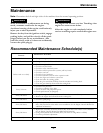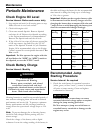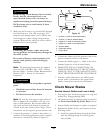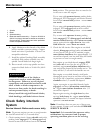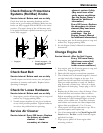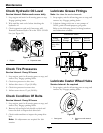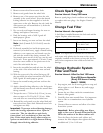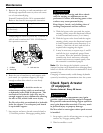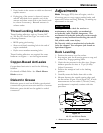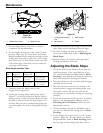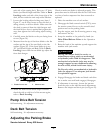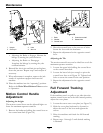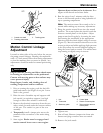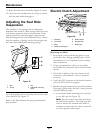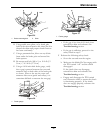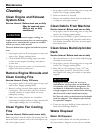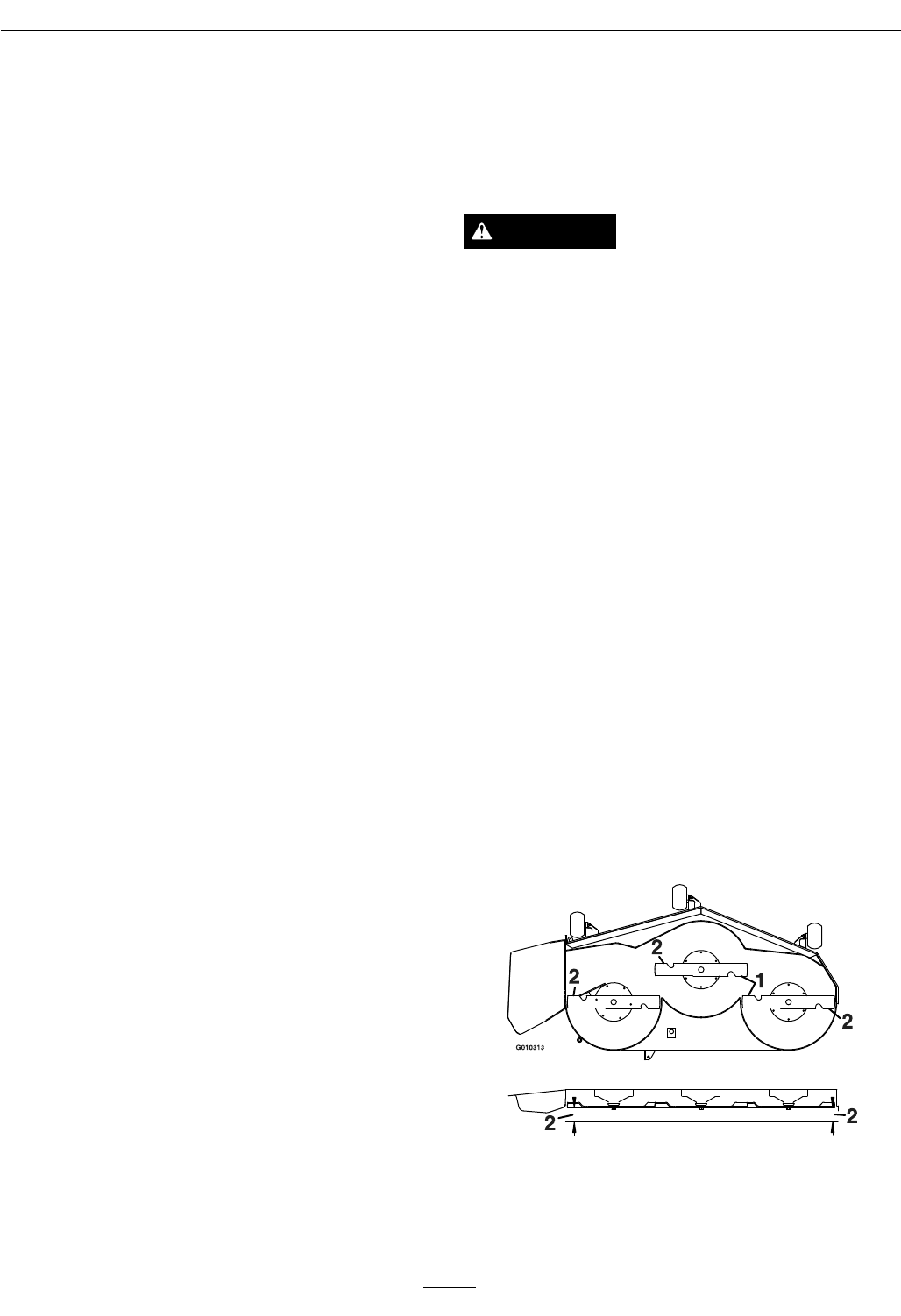
Maintenance
3. If any breaks in the screen or welds are observed,
replace arrester.
4. If plugging of the screen is observed, remove
arrester and shake loose particles out of the
arrester and clean screen with a wire brush (soak
in solvent if necessary). Reinstall arrester on
exhaust outlet.
Thread Locking Adhesives
Thread locking adhesives such as “Loctite 242”
or “Fel-Pro, Pro-Lock Nut Type” are used on the
following fasteners:
• ROPS spring pin housing.
• Sheave and clutch retaining bolt in the end of
engine crankshaft.
• Hydro cross member mounting bolts
Thread locking adhesives are required for some
hardware on engines — see the Engine manual.
Copper-Based Anti-seize
Copper-based anti-seize is used in the following
location:
On threads of Blade Bolts. See Check Mower
Blades section.
Dielectric Grease
Dielectric grease is used on all blade type electrical
connections to prevent corrosion and loss of contact.
Dielectric grease should not be applied to sealed
connectors.
Adjustments
Note: Disengage PTO, shut off engine, wait for
all moving parts to stop, engage parking brake, and
remove key before servicing, cleaning, or making any
adjustments to the unit.
CAUTION
Raising the mower deck for service or
maintenance relying solely on mechanical
or hydraulic jacks could be dangerous. The
mechanical or hydraulic jacks may not be enough
support or may malfunction allowing the unit to
fall, which could cause injury.
Do Not rely solely on mechanical or hydraulic
jacks for support. Use adequate jack stands or
equivalent support.
Deck Leveling
1. Position the mower on a at surface.
2. Stop engine, wait for all moving parts to stop, and
remove key. Engage parking brake.
3. Check the tire pressure in the drive tires. Proper
ination pressure for tires is 13 psi (90 kPa).
Adjust if necessary.
4. Position the transport lock in the latching
position.
5. Carefully rotate the blades from side to side.
6. Measure between the outside cutting edges and
the at surface (
Figure 25 and Figure 26). If both
measurements are not within 3/16 inch (5 mm),
an adjustment is required; continue with this
procedure.
Figure 25
48, 52, and 60 Inch Decks
1. Blades side to side 2. Measure here
35



